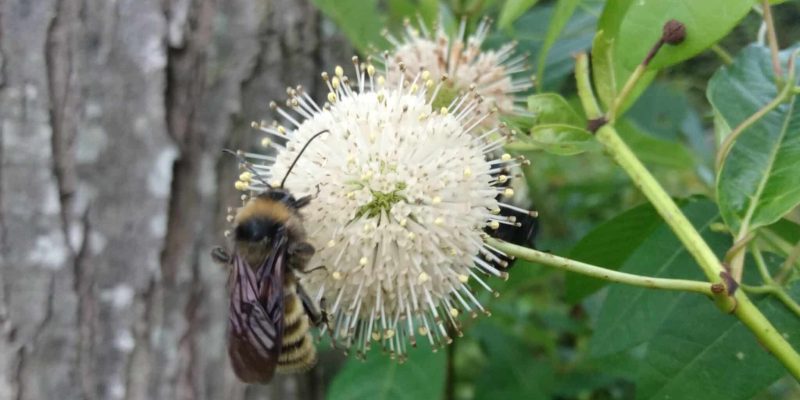Acorns of Quercus ruba (Northern red oak)
Our catalog lists the wetland indicator status of every species we grow. This is sourced from wetland ratings found in the National Wetland Plant List (NWPL). Wetland indicators provide insight on a plant’s water needs, however be aware that these categories generalize. Species vary significantly within any category. Below are descriptions of each wetland indicator:

Cephalanthus occidentalis (Buttonbush)
Wetland indicator status is a classification developed by the U.S. EPA, Fish and Wildlife Service, and Army Corps of Engineers to help categorize plants for conservation and restoration projects. Wetland indicators are a useful tool at Mellow Marsh when we suggest substitutions, since they help us ensure we match water requirements. They can be useful to people browsing our catalogue as they provide a filter for water needs.